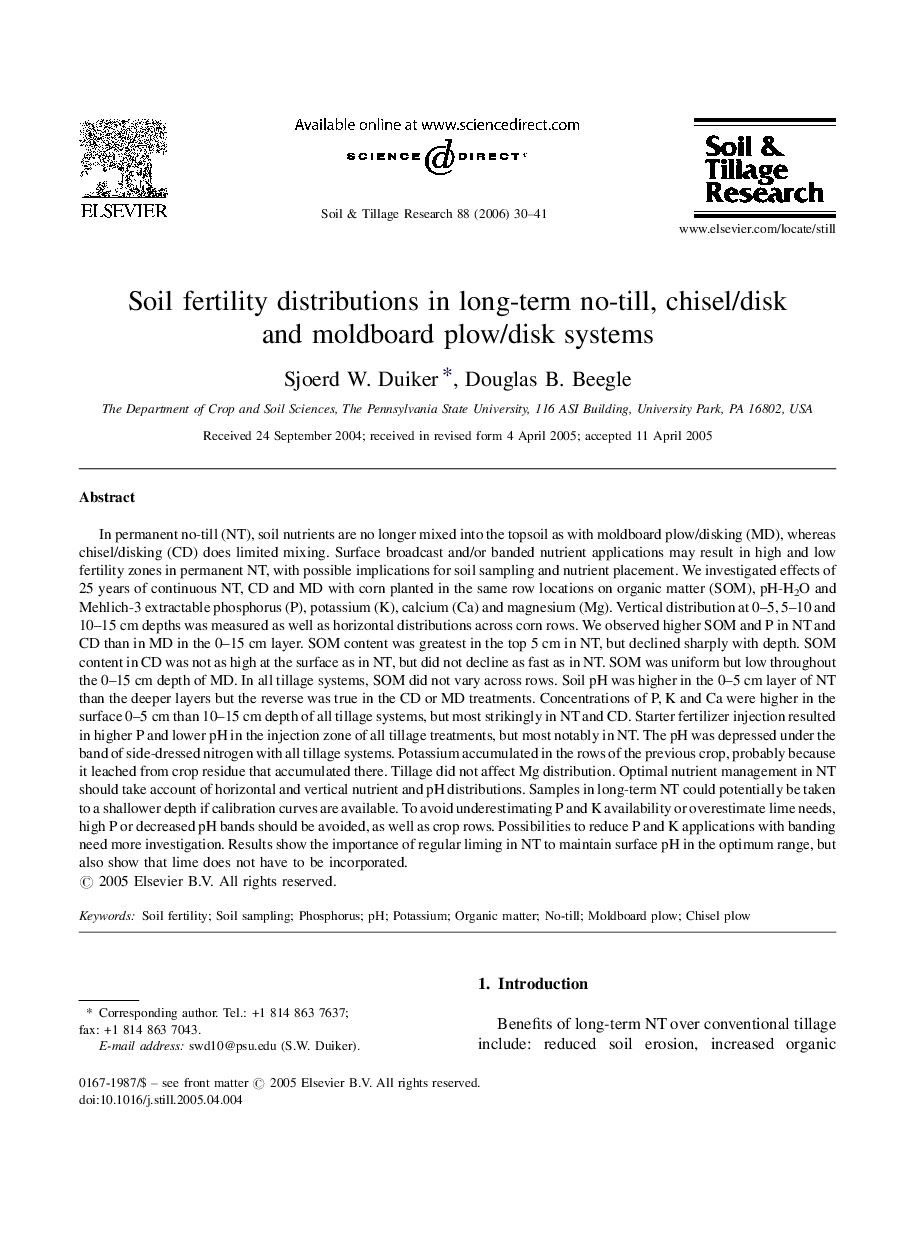| Article ID | Journal | Published Year | Pages | File Type |
|---|---|---|---|---|
| 306946 | Soil and Tillage Research | 2006 | 12 Pages |
In permanent no-till (NT), soil nutrients are no longer mixed into the topsoil as with moldboard plow/disking (MD), whereas chisel/disking (CD) does limited mixing. Surface broadcast and/or banded nutrient applications may result in high and low fertility zones in permanent NT, with possible implications for soil sampling and nutrient placement. We investigated effects of 25 years of continuous NT, CD and MD with corn planted in the same row locations on organic matter (SOM), pH-H2O and Mehlich-3 extractable phosphorus (P), potassium (K), calcium (Ca) and magnesium (Mg). Vertical distribution at 0–5, 5–10 and 10–15 cm depths was measured as well as horizontal distributions across corn rows. We observed higher SOM and P in NT and CD than in MD in the 0–15 cm layer. SOM content was greatest in the top 5 cm in NT, but declined sharply with depth. SOM content in CD was not as high at the surface as in NT, but did not decline as fast as in NT. SOM was uniform but low throughout the 0–15 cm depth of MD. In all tillage systems, SOM did not vary across rows. Soil pH was higher in the 0–5 cm layer of NT than the deeper layers but the reverse was true in the CD or MD treatments. Concentrations of P, K and Ca were higher in the surface 0–5 cm than 10–15 cm depth of all tillage systems, but most strikingly in NT and CD. Starter fertilizer injection resulted in higher P and lower pH in the injection zone of all tillage treatments, but most notably in NT. The pH was depressed under the band of side-dressed nitrogen with all tillage systems. Potassium accumulated in the rows of the previous crop, probably because it leached from crop residue that accumulated there. Tillage did not affect Mg distribution. Optimal nutrient management in NT should take account of horizontal and vertical nutrient and pH distributions. Samples in long-term NT could potentially be taken to a shallower depth if calibration curves are available. To avoid underestimating P and K availability or overestimate lime needs, high P or decreased pH bands should be avoided, as well as crop rows. Possibilities to reduce P and K applications with banding need more investigation. Results show the importance of regular liming in NT to maintain surface pH in the optimum range, but also show that lime does not have to be incorporated.
